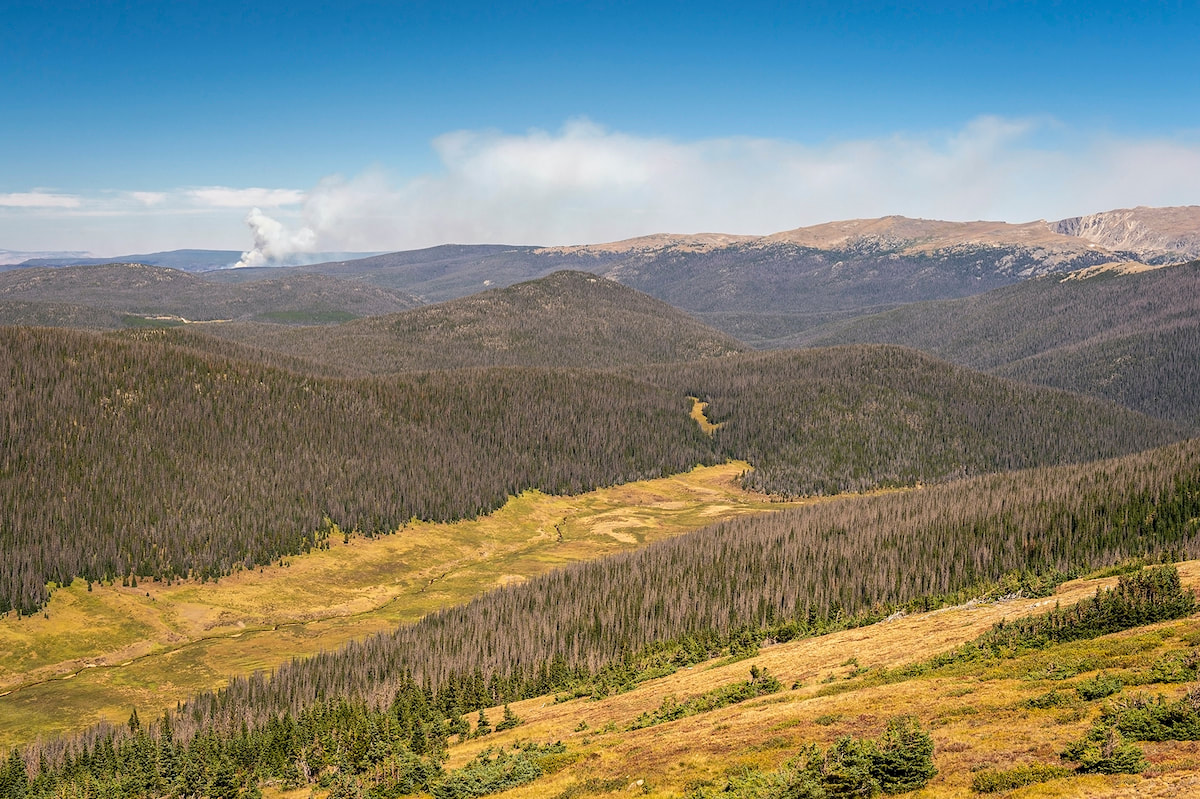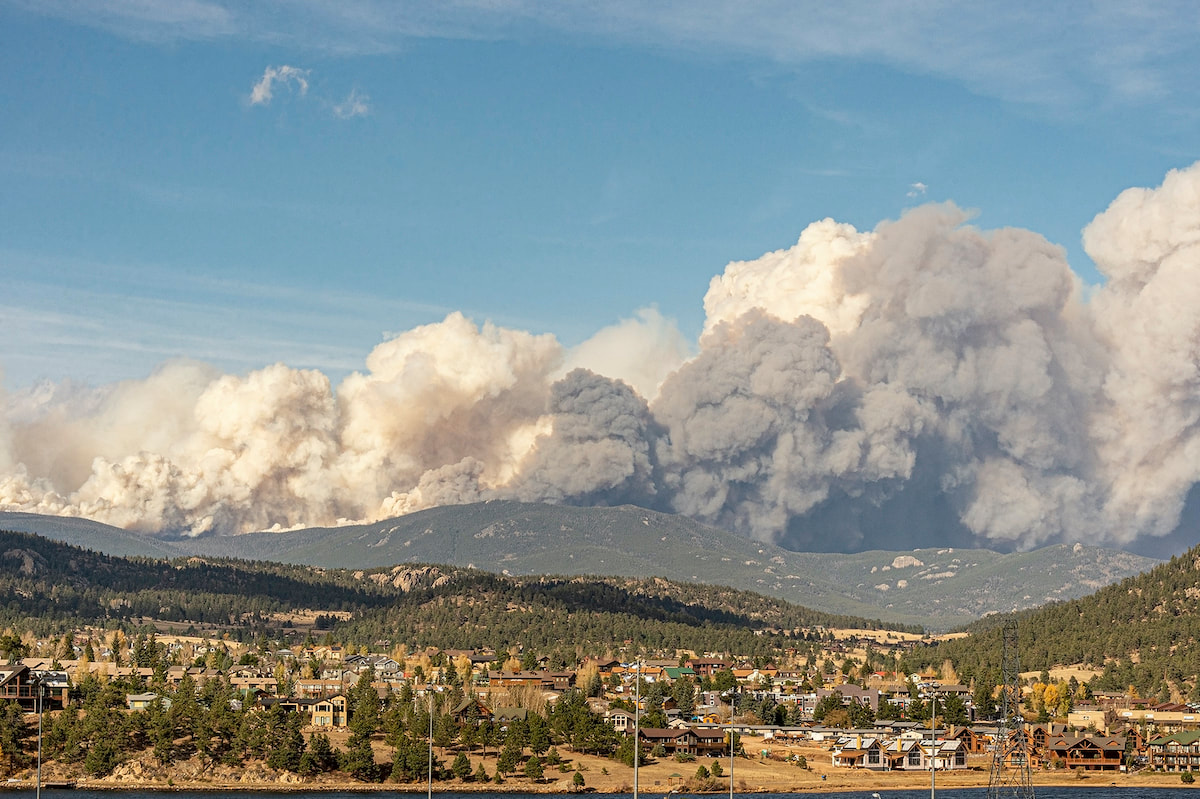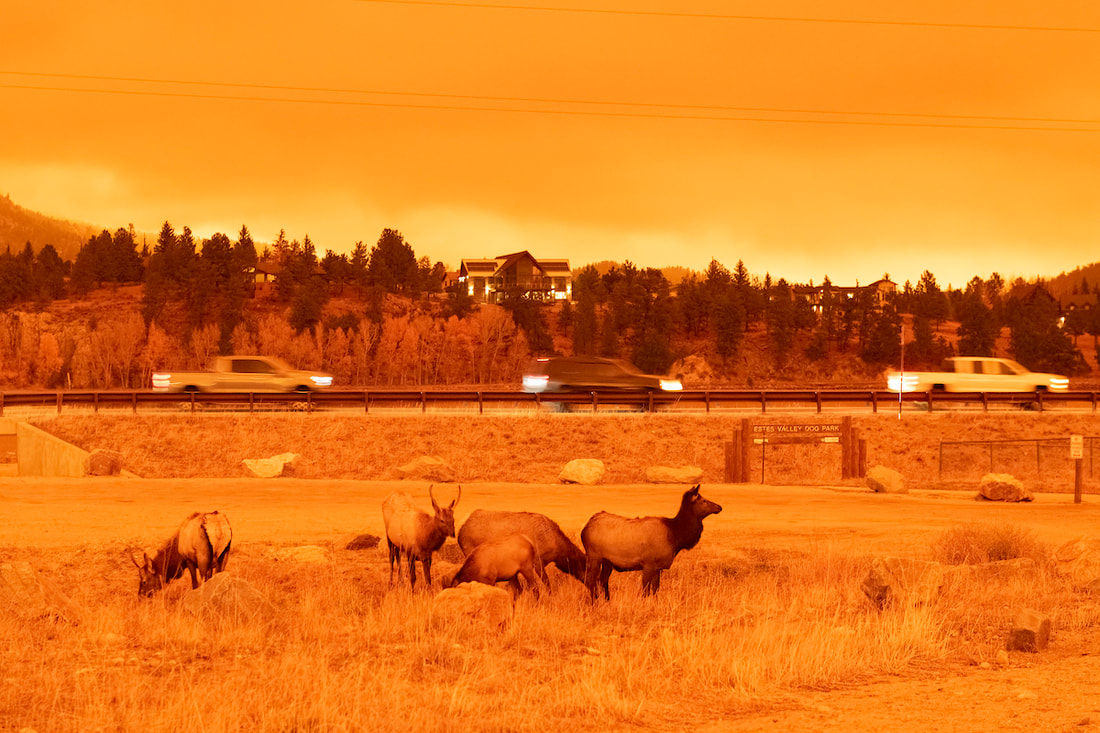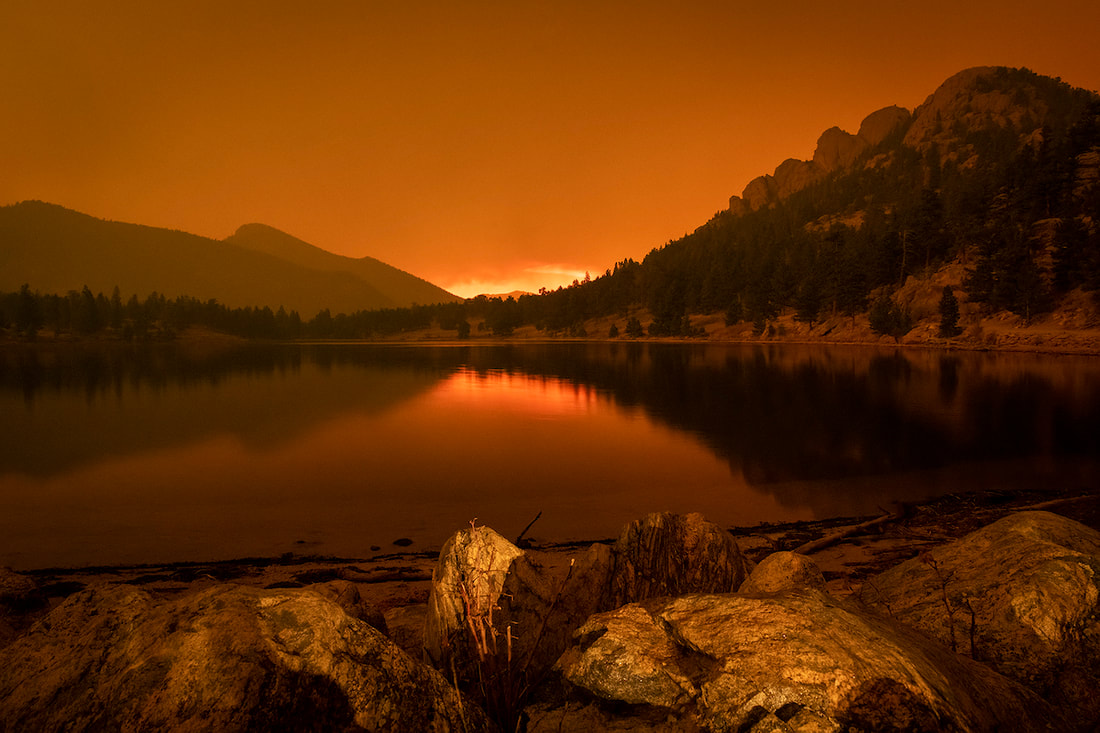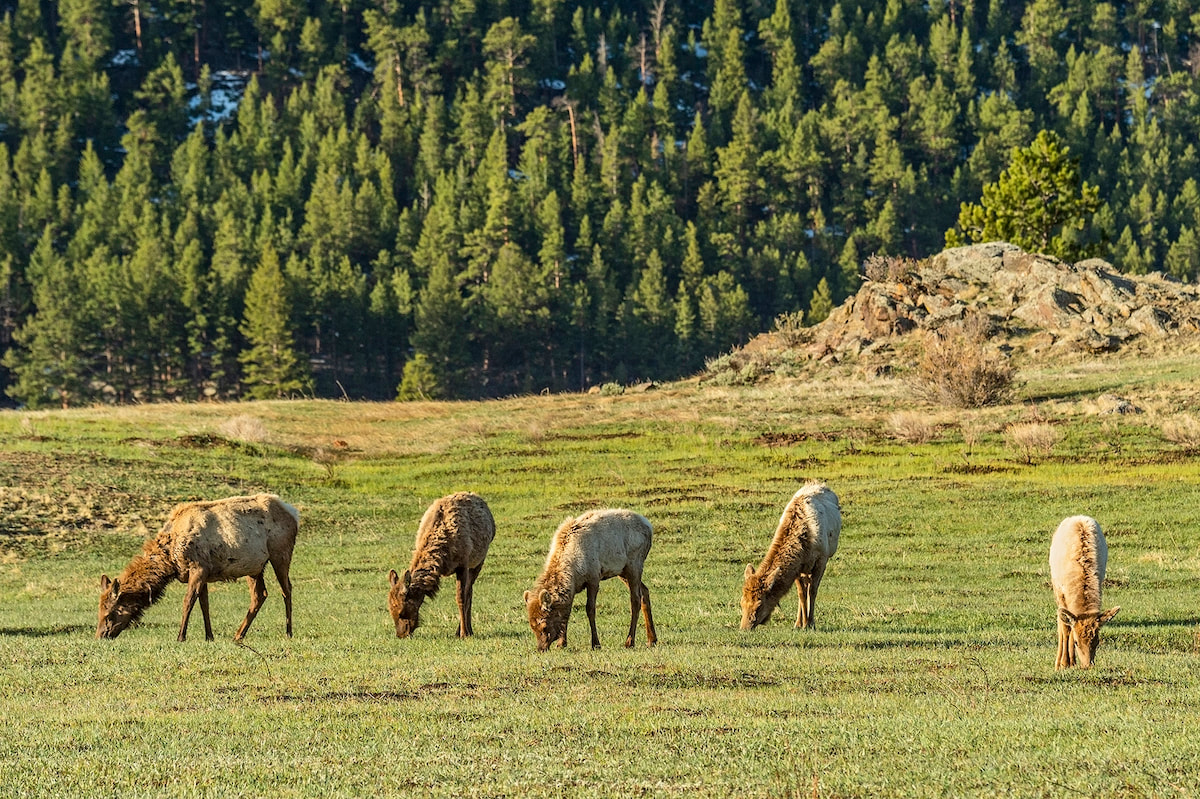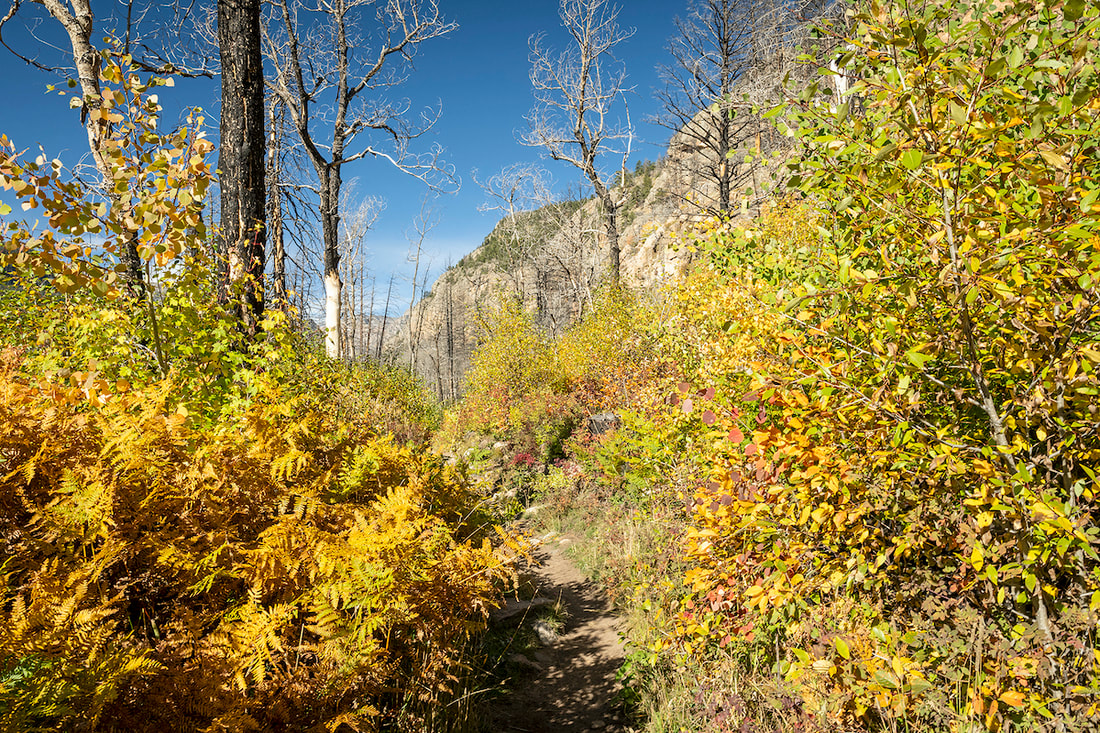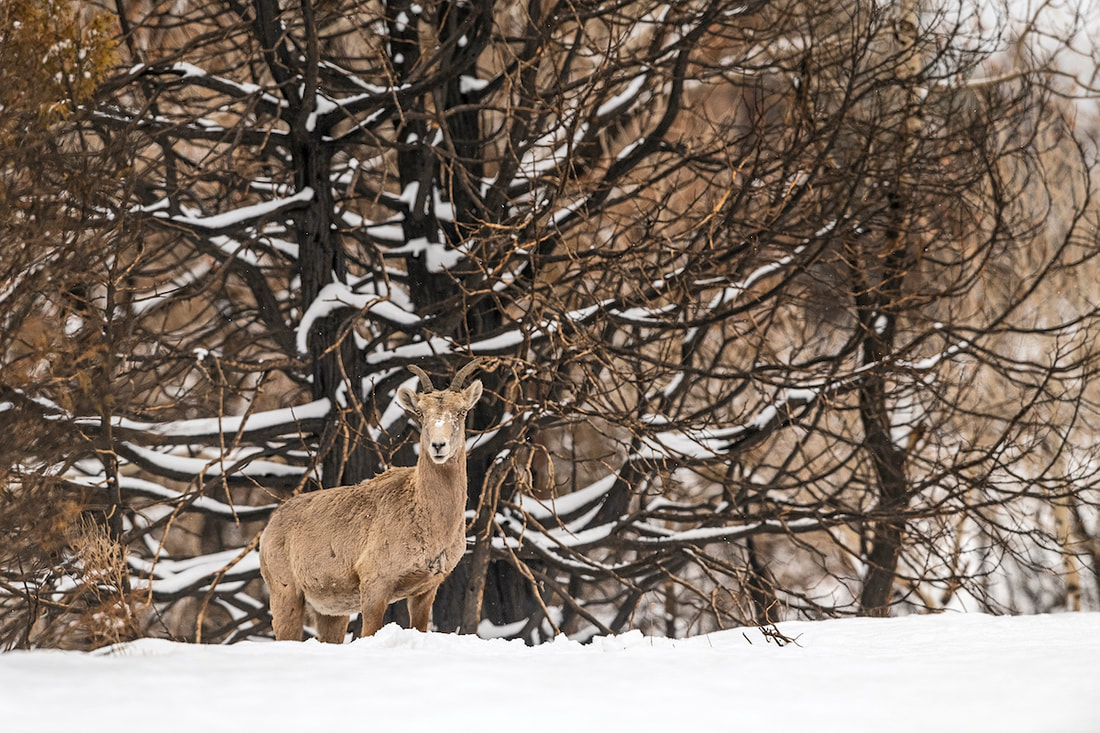|
Notes from the
Trail |
|
By Dawn Wilson, Dawn Wilson Photography In August 2020, the Cameron Peak Fire started north of Rocky Mountain National Park. On the sunny summer day of August 13, 2020, the fire broke out near Chambers Lake in Roosevelt National Forest. The conditions were ripe for a wildfire to quickly spread, with low humidity, high winds and large amounts of dry forest fuel in the area. By the end of August, the fire was 23,022 acres, only 5% contained and burning east. Residents of Estes Park and Glen Haven became concerned that the fire, which was burning timber in the area of Poudre Canyon west of Fort Collins but only a few miles north of Estes Park, may spread south into the valley. By early October, the Cameron Peak Fire engulfed thousands of acres of forest and became Colorado’s largest wildfire on October 14. On October 18, the fire was the first in Colorado’s history to surpass 200,000 acres in size. As close as the Cameron Peak Fire was to Estes Park, with flames and large plumes of dark gray smoke visible to the north of Lumpy Ridge, it was the East Troublesome Fire that caused the evacuation of the entire town, the first in the history of Estes Park. The East Troublesome Fire seemed like a distant tragedy when it started on October 14, 2020, near Kremmling, Colo., more than 40 miles away as the crow flies. Within 36 hours, however, from October 21 to 22, the East Troublesome Fire grew more than 120,000 acres when a perfect storm of conditions developed for rapid fire growth. Starting at approximately 19,000 acres on the morning of October 21, the fire consumed a total of 125,678 acres by the end of that day. By the end of the following day, that number had exploded to 189,505 acres. Unseasonably warm temperatures, humidity levels that dropped to about 11% and wind gusts of 60 miles per hour caused the fire to roar through the dry timber in the Arapaho National Forest. The fire that had been manageable but steadily growing up to that afternoon, turned into an inferno that burned 18 miles through Grand Lake, the west side of Rocky Mountain National Park and, in an unusual event for wildfires, a spot fire jumped over the Continental Divide in just one evening. Estimates put the fire advancement that night at 6,000 acres per hour. Where the spot fire landed in Rocky Mountain National Park during that advancement set up a direct run towards Estes Park. A rapid evacuation order was put in place for the entire town of Estes Park. U.S. Highway 34 had already been closed due to the extreme fire behavior of the Cameron Peak Fire still burning to the north but was reopened to allow residents to seek shelter in Loveland. Many used U.S. Highway 36 to reach Lyons, Longmont and Boulder. Others headed south towards Black Hawk. All residents of Estes Park were now in a dash to get out of town. It would be a week before they were allowed to return. The dramatic weather event that caused the rapid growth from October 21 to 22 transitioned into another dramatic weather event when a winter storm moved into the area late on October 22 and into October 23. Several inches of snow dropped during that latter weather event causing an almost immediate stop in the growth of the East Troublesome Fire, which only grew about 5,000 acres over the next three days. Much of that fire advancement was within Rocky Mountain National Park near Estes Park. By the time these two fires were 100% contained in late 2020, they had burned a combined 402,725 acres – 193,812 acres in the East Troublesome Fire, which was 100% contained on November 30, and 208,913 acres in the Cameron Peak Fire, which was 100% contained on December 2. They would become Colorado’s largest fires in the state’s history. That year also marked Colorado’s worst fire season, with more than 665,000 acres burned across the state. When the fires were declared contained, nearly 30,000 acres had burned in Rocky Mountain National Park, including: a large portion of the Kawuneeche Valley, areas near Cascade Creek, Hague Creek and Mummy Pass Creek in the northern region of the park, and the Fern Lake, Spruce Creek, Moraine Park and Upper Beaver Meadows areas on the east side of the park. Two people – Lyle Hileman, 86, and Marylin Hileman, 84 – died in the East Troublesome Fire when they chose not to evacuate, staying instead in the basement of their Grand Lake home. They were the only two human casualties of the two fires. The East Troublesome Fire destroyed 555 structures, including 366 residences; many were in Grand Lake. The Cameron Peak Fire burned 469 structures, which included 224 residential structures. Today, due to the extensive work done by trail crews, much of Rocky Mountain National Park has reopened after the 2020 fires. Although the Sun Valley Trail in Kawuneeche Valley has reopened, the area west of the trail remains closed. The Upper Mummy Pass Trail in the northern portion of the park also remains closed. All other areas have reopened but the damage is still quite visible with burn scars, fallen trees and cracked rocks throughout the burn areas. For as damaging as the fires may have been for the park and the surrounding areas, regrowth is visible. The first summer after the fires produced an abundance of wildflowers throughout the region, especially large patches of fireweed, a flower named for its rapid growth in areas after wildfires. The following year large patches of lupine grew in the burn scars. Small lodgepole pine trees can also be seen growing in Kawuneeche Valley where the fire helped to open up their cones. Although it takes about 100 to 200 years for lodgepole pine trees to reach maturity, these little one-foot-tall trees are a sign of nature’s resilience in the face of adversity. Along the Fern Lake Trail, abundant aspen groves and patches of chokecherries fill the landscape.
The park lost several historic buildings in the fires, including the Fern Lake Backcountry Patrol Cabin. Built in 1925, it was the park’s oldest structure. Also lost in the East Troublesome Fire were the historic Onahu Lodge, the Green Mountain cabins, the Grand Lake entrance station, the Trails and Tack Barn (and its contents) and the four-bay garage at the Trail River Ranch. Plans have been approved to replace the Green Mountain cabins, which were used for employee housing, with a new housing complex near the existing park housing area on the west side of the park. A vault toilet at Harbison Meadows that burned in the East Troublesome Fire has already been replaced and construction continues on the Grand Lake entrance station. Experts in wildfires and climate change agree that large and rapidly growing wildfires are unfortunately here to stay. If you own property in Estes Valley, contact the Estes Valley Fire Protection District for a free wildfire property assessment. Application information is available at: https://www.estesvalleyfire.org/wildfire-property-assessments.
0 Comments
Leave a Reply. |
"The wild requires that we learn the terrain, nod to all the plants and animals and birds, ford the streams and cross the ridges, and tell a good story when we get back home." ~ Gary Snyder
Categories
All
“Hiking -I don’t like either the word or the thing. People ought to saunter in the mountains - not hike! Do you know the origin of the word ‘saunter?’ It’s a beautiful word. Away back in the Middle Ages people used to go on pilgrimages to the Holy Land, and when people in the villages through which they passed asked where they were going, they would reply, A la sainte terre,’ ‘To the Holy Land.’ And so they became known as sainte-terre-ers or saunterers. Now these mountains are our Holy Land, and we ought to saunter through them reverently, not ‘hike’ through them.” ~ John Muir |
© Copyright 2025 Barefoot Publications, All Rights Reserved

